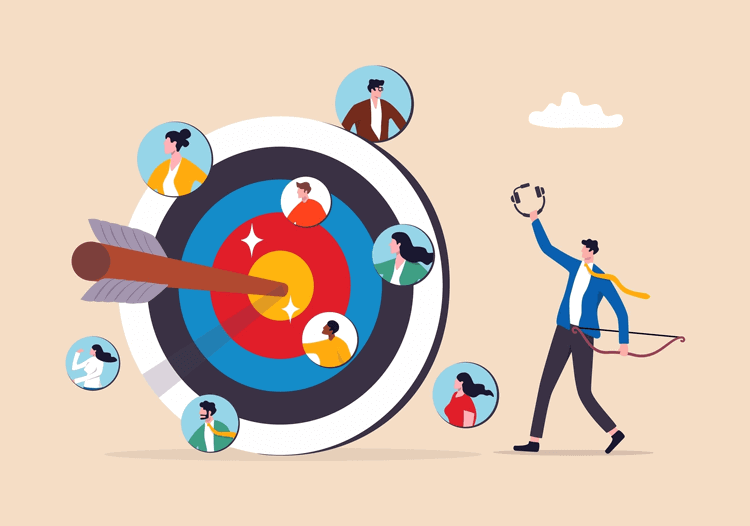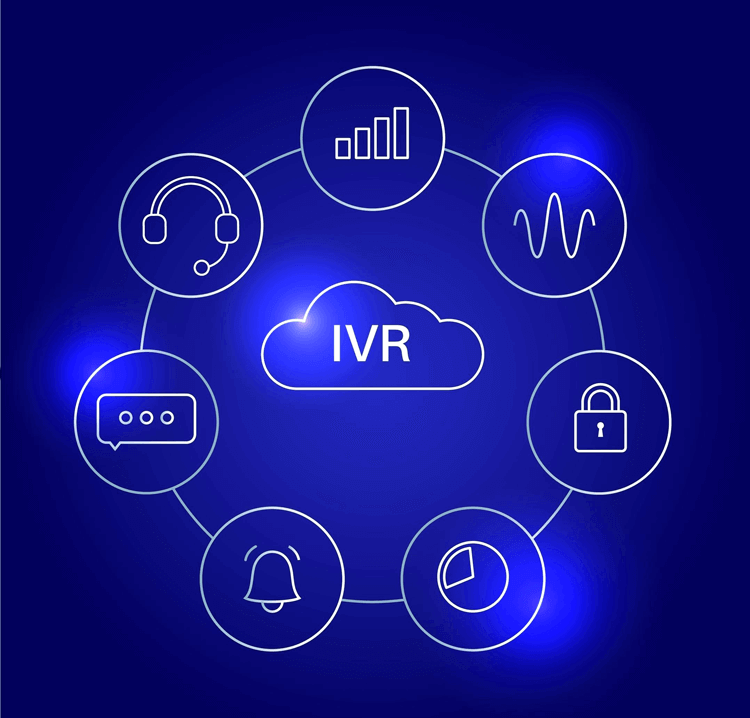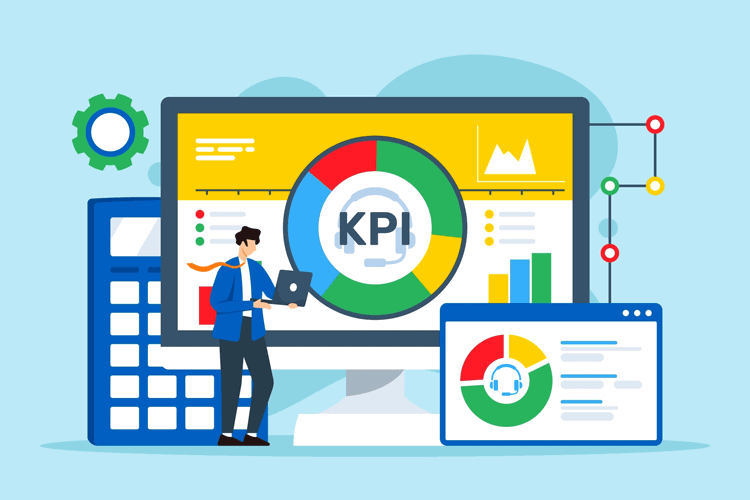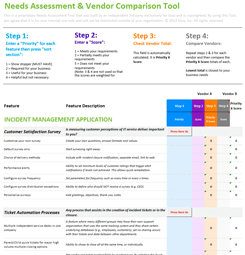Customer Service Goals: 11 Ways to Inspire Improvement Plus How-To's
Delivering top-notch customer service is an ongoing pursuit. To help make sure you are trending in a productive direction, it's helpful to set forth strategic customer service goals.

Customer service goals are the stepping stones you follow on your way to realizing the larger vision or mission of your organization. By accomplishing goals, you can increase short-term customer satisfaction and long-term loyalty, as well as occupy a competitive position in your respective industry.
In this article, we will examine some of the best customer service goals you can use to directly inspire the improvements you desire for your business. We'll also talk about which metrics to pay attention to and various ways to measure those metrics. Then, we'll wrap up with some best practices for designing and implementing effective customer service goals.
11 Top Customer Service Goals for Today's Support
Below is a list of 11 of the best customer service goals. We want this list to function as examples for more specific S.M.A.R.T. goals (more on this acronym later) you will create for your particular business. We will define each item and discuss its importance. We'll also provide some guidance on how to measure and interpret the goal.
-
Increase the Usage of Automation
The most cutting-edge customer service goals involve increasing automation. Automation tools are easier to use and more powerful now than ever. Plus, increasing automation can enhance how your business interacts with customers, improving your services and their satisfaction.
How to Implement
For example, AI-powered self-service helps desks. One study found that 53% of businesses believe their customers are very satisfied with their self-service offerings, but only 15% of consumers agree.
To help with this, Giva has designed people and AI-powered customer service software. Giva's software uses AI copilots and automated smart workflows to help customers resolve issues rapidly.
-
Gather and Analyze Customer Feedback
Your customers' feedback is one of the most valuable data points you can consider when developing customer service goals. Their feedback can quite literally become the parameters you use to guide upcoming business decisions.
How to Implement
The tricky thing about feedback is that it can be more qualitative than quantitative. Think of written short-answer responses on your product pages. However, there are also quantitative metrics you can measure:
- The volume of feedback you are receiving
- A specific number of feedback or survey responses you want to collect
- A specific type of feedback you want to gather (e.g., survey response or online reviews, etc).
-
Expand Into an Omnichannel System
Expanding into an omnichannel system involves growing from a simple, one-dimensional customer service department to one with multiple channels.
How to Implement
For example, call centers handling inbound and outbound calls were once the primary form of communication between companies and their customers. Nowadays, companies can offer much higher-quality customer service by expanding the channels through which they interact with customers:
- Email communication
- Text messaging
- Phone calls
- Self-service FAQ pages
- AI chatbots
Figuring out which channels to use is all about identifying which channel your target demographic uses. From there, you can target different performance metrics for each channel and work to improve them individually (i.e., channel response time and volume per channel).
-
Improve Customer Loyalty
When it comes to goods and services, customers have more choices than ever. That's why increasing customer loyalty is so important now and in the future. You can improve customer loyalty and retention by:
- Deeply appreciating current customers
- Developing customer loyalty programs with rewards
- Increasing the customization and personalization you use in your messaging
How to Implement
To measure customer loyalty, metrics like customer retention and customer churn can be helpful. In addition, paying attention to customer reviews and feedback is a great way to gauge loyalty.
-
Decrease Your Response Time
Rapid response times are one of the most effective ways to win customers. That's because 83% of customers expect an immediate response when they contact a company. So, by shortening the time your customers wait for a response, you show you care, which creates a good impression.
How to Implement
Measuring response time is relatively simple. Your First Response Time (FRT) is an easy metric to pay attention to. If your customer service operates a call center, then average hold time and transfer rates are also helpful metrics for gauging how rapidly your customers are being helped.
-
Implement Continuous Training
Training shouldn't stop after new employee onboarding. On the contrary, there should be opportunities for continuous training.
Continuous training helps customer service employees hone their skills and gather more knowledge. It also helps them (and you) identify their strengths and weaknesses, which can boost their performance.
How to Implement
Continuous training is especially vital when updating standard operating procedures.
Here are some great examples of training opportunities you can offer:
- Seminars
- One-on-one mentorship
- E-learning modules
- On-the-job training
-
Reduce Operating Costs
Every customer service department wants to save money. Typically, the goal is to operate well within a budget and simultaneously deliver high-quality service. In doing so, you display financial responsibility and competency, both of which are good for the economic sustainability of the business and the overall customer experience.
How to Implement
There are many ways customer service departments can reduce operating costs, too many to list here. Nonetheless, here are some ideas.
- Track peak hours to better understand staffing requirements: You can avoid overstaffing by understanding the times of day when you're the slowest.
- Outsource your customer service needs to a third party that can perform better: Your money may be better spent paying a third-party vendor than dumping it into inefficient customer service.
- Offer self-service options to customers, like an AI chatbot: Chatbots can be more cost-effective because they can handle high volumes simultaneously and operate 24/7.
-
Boost Productivity
"Productivity" in customer service is an allusive term. Depending on your industry, it can mean many different things, so it's measured in different ways. However, in general, companies should strive to support their teams' productivity, resulting in fewer errors and delays, which leads to more satisfied customers.
How to Implement
To boost productivity, you can implement robust standard operating procedures for employees and consider implementing automation tools. Reassessing how you train your personnel during onboarding and what training opportunities are available after hire is also an effective strategy.
-
Increase Employee Satisfaction
Let's be honest — happy workers are better at offering top-notch customer service than unhappy workers. So, to accomplish customer service goals, it can be essential to focus on your employees first.
Not to mention, happy and highly engaged employees can result in 21% more profitability.
How to Implement
For creating goals that increase employee satisfaction, it can be helpful to pay attention to your employee turnover and retention rates, and most importantly, your Employee Net Promoter Score (eNPS). Your business's eNPS is the likelihood that your employees would recommend your organization to others.
You can design and deliver surveys to gather quantitative data like retention rates and eNPS. For a more qualitative approach, one-on-one conversations with your peers and exit interviews are fantastic sources of information.
-
Increase Customer Satisfaction
Customer satisfaction is the foundation of customer service, so improving it will always be a foundational goal for customer service agents and departments.
How to Implement
The approach to improving customer satisfaction is counterintuitive. First, you want to collect data and feedback to identify areas where your customers are the most unsatisfied. Then, you want to design goals to improve those specific areas.
Examples include:
- Reducing hold time on the phone
- Expanding the number of channels customers can interact with
- Improving your first contact resolution rate
-
Create a Consistent Experience Across All Touchpoints
We've all heard the phrase "consistency is key." In customer service, that couldn't be more true--the goal is to offer equivalent and high-quality service across all touchpoints (e.g., phone calls, email, messenger, etc.). In doing so, you can develop a robust brand and build trust with your most loyal customers.
Data from Gallup suggests that businesses experience 25% more customer loyalty by creating consistent customer engagement across different platforms.
How to Implement
Consistency starts by standardizing employee training. Furthermore, consistency is carried forward by continually equipping your staff with the resources and motivation they need to perform their best.
The most effective way to measure consistency across customer service touchpoints is to solicit customer feedback via surveys. To provide sustainable customer service, you can deliver surveys and analyze the findings quarterly or bi-annually.
S.M.A.R.T. Goals in Customer Service
So far, we've presented eleven examples of customer service goals to equip you to start brainstorming. But for those examples to make an impact, they have to be more detailed. They have to be S.M.A.R.T.
S.M.A.R.T. is a mnemonic that highlights and helps you remember the five critical qualities of customer service goals. (Or any goal for that matter). S.M.A.R.T. stands for:
- Specific: Your goal should highlight a particular pain point you want to address.
- Measurable: The goal needs to have a numerical metric you can track.
- Achievable: Goals should be realistic and actually achievable for you (in this way, goals differ from visions).
- Relevant: Your goal(s) must align or be applicable to your more significant and longer-term business objectives or vision.
- Time-bound: The goal needs to have a clear and concise deadline.
Here's a quick example of a S.M.A.R.T. customer service goal that deploys the above principles:
"By the end of the fiscal year 2025, our customer service personnel will complete five required e-learning modules, totaling 25 hours, to ensure each individual is adequately prepared for the new customer service software integration in 2026."
In a separate blog, we explored the S.M.A.R.T. goal theory and used customer satisfaction as an example. When you are done reading here, we recommend reading our SMART Customer Satisfaction Goals for more information.
Best Practices for Defining Good Customer Service Goals
Ready to define some customer service goals? Great! But before you do, we have a little more advice to help you start off on the right foot.
-
Seek Guidance from Customer Feedback
Customer feedback is a critical data point for understanding your customers' evolving needs and how to improve your products and/or services to address those needs.
This means customers must have an avenue for sharing their constructive criticism.
From there, it's vital to have a strategy for unpacking the customer feedback and looking for patterns. By analyzing the data, you can identify pain points in your customers' experiences and define goals that address them.
-
Make Your Goals S.M.A.R.T.
We know, this one is a bit repetitive. But it's so vital that it's worth repeating.
Your customer service goals must hit the S.M.A.R.T. criteria to have the most significant impact on your customer service department.
-
Harness Modern Technology
With all the powerful technology at your disposal today, there's no reason not to invest in the tools you believe will take your customer service department to the next level. To be clear, we aren't advocating for overloading on too much tech.
Instead, we're highlighting the importance of harnessing the correct tool(s) at the right time based on your pre-defined customer service goals.
For example, if you set a goal like "increase first-contact resolution by 5% compared to last year by the end of quarter 4," you might decide that new customer service software is required to help you accomplish that goal.
Giva has designed powerful customer service software that combines the expertise of customer service agents with AI co-pilots to boost productivity and enhance customer experience.
-
Align Your Goals with Your Vision
We briefly referenced the dichotomy between goals and visions above. Let's return to that concept for a moment.
As we've learned, customer service goals are specific, measurable, attainable, realistic, and time-bound milestones that customer service departments seek to accomplish. On the other hand, visions are longer-term, loftier, and more conceptual statements designed to unite and inspire the overall trajectory of customer service departments.
The two work together because "good" goals align with and support accomplishing the overarching vision. When strategic stepping stones pave the way toward larger business improvements, no long-term vision is too impossible.
-
Remember Your "Why"
When defining customer service goals gets murky, take a step back and remember your "why."
- Is it to offer the best customer service for your industry in your local city? State? Maybe country?
- Are you responding to a particular type of customer feedback?
- Do you want to beat out a specific competitor?
- Are your goals financially motivated?
- Is there a pressing deadline?
Remembering why you've set out to accomplish certain goals and the motivation behind them can alleviate some of the struggles of defining them.
Let Strategic and Well-Planned Customer Service Goals Guide the Way
There are many paths forward to accomplishing ultimate customer satisfaction. To find the correct path forward for you and your business, create well-defined and data-backed S.M.A.R.T. customer service goals you can use to guide the way.
By doing so, you'll not only have more happy customers but also gain an advantage over your competition. And when things get inevitably tough, remember your "why" and stick to the goals that propel you toward your overall vision the fastest.
Giva Can Help Streamline Your Customer Service Processes
Giva's worry-free customer service software can help you focus on delivering customer happiness:
- Start serving customers after just 1 hour of training
- Resolve issues quickly and effortlessly with AI Copilots, automation & smart workflows
- Get immediate and actionable customer insights with highly visual dashboards, reports, charts and graphs
Let Giva be your partner in helping your support teams reach your service goals. Book a free demo to see Giva's solutions in action, or start your own free, 30-day trial today!





